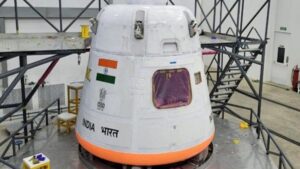In an exciting development for space exploration, astronomers affiliated with the International Astronomical Union have identified three new moons in the outer reaches of our solar system. These celestial bodies, with two orbiting Neptune and one around Uranus, were detected through the use of powerful land-based telescopes across the globe.
Uranus and Neptune’s Growing Families
This discovery increases the count of known moons to 28 for Uranus and 16 for Neptune. Among these, a particularly small moon measuring just five miles in diameter circles Uranus, showcasing the diverse sizes and orbits of these distant moons.
A Window to the Solar System’s Past
The addition of these moons offers scientists invaluable insights into the early, chaotic years of the solar system and the formation of celestial bodies. The prevailing theory suggests that the gravitational forces of Uranus and Neptune snagged these moons during the planets’ formation or shortly thereafter, hinting at a dynamic history of planetary movement and moon capture at the solar system’s fringes.
The Hunt for the New Moons
The discovery was made possible through meticulous observation techniques. Astronomers utilized long-exposure photography over several nights, employing some of the largest telescopes worldwide. This method allowed for the detailed examination of the space surrounding Uranus and Neptune, previously unachievable through conventional observation techniques.
Scott Sheppard, speaking on the technique, explained how combining multiple exposures helped distinguish the moons from the background noise of space. By identifying objects moving in sync with the planets, astronomers could bring these previously hidden moons into focus.
Collaborative Discoveries Across the Globe
The search involved international collaboration, with Scott Sheppard leading the efforts using the Magellan Telescope in Chile and the Subaru Telescope in Hawaii. These efforts, alongside contributions from David Tholen, Chad Trujillo, and Patryk Sofia Lykawa, led to the identification of the moons, first spotted in 2021.
The brighter of Neptune’s new moons measures about 14 miles in diameter and completes an orbit in nearly nine years, while the fainter moon has an orbital period of 27 years—the longest known for a Neptunian moon. Uranus’ latest moon, spotted in 2023, takes 680 days to complete its orbit and measures about 5 miles across.
Future Names and the Quest Continues
Following tradition, the new moon of Uranus, provisionally named S/2023 U1, is expected to receive a name from a Shakespearean character, aligning with the naming conventions of Uranus’ other moons. The new Neptunian moons, temporarily designated S/2021 N1 and S/2021 N5, will be named after one of the 50 Nereid sea goddesses, reflecting Neptune’s mythological associations.
As astronomers continue their quest, Scott Sheppard hints at the possibility of discovering even more moons orbiting these distant planets, indicating an ongoing journey to uncover the secrets of our solar system’s outer edges.










 ISRO to Conduct First Gaganyaan Test Fli...
ISRO to Conduct First Gaganyaan Test Fli...
 Russia to Launch Venera-D Mission to Ven...
Russia to Launch Venera-D Mission to Ven...
 India Targets Indigenous Space Station b...
India Targets Indigenous Space Station b...

